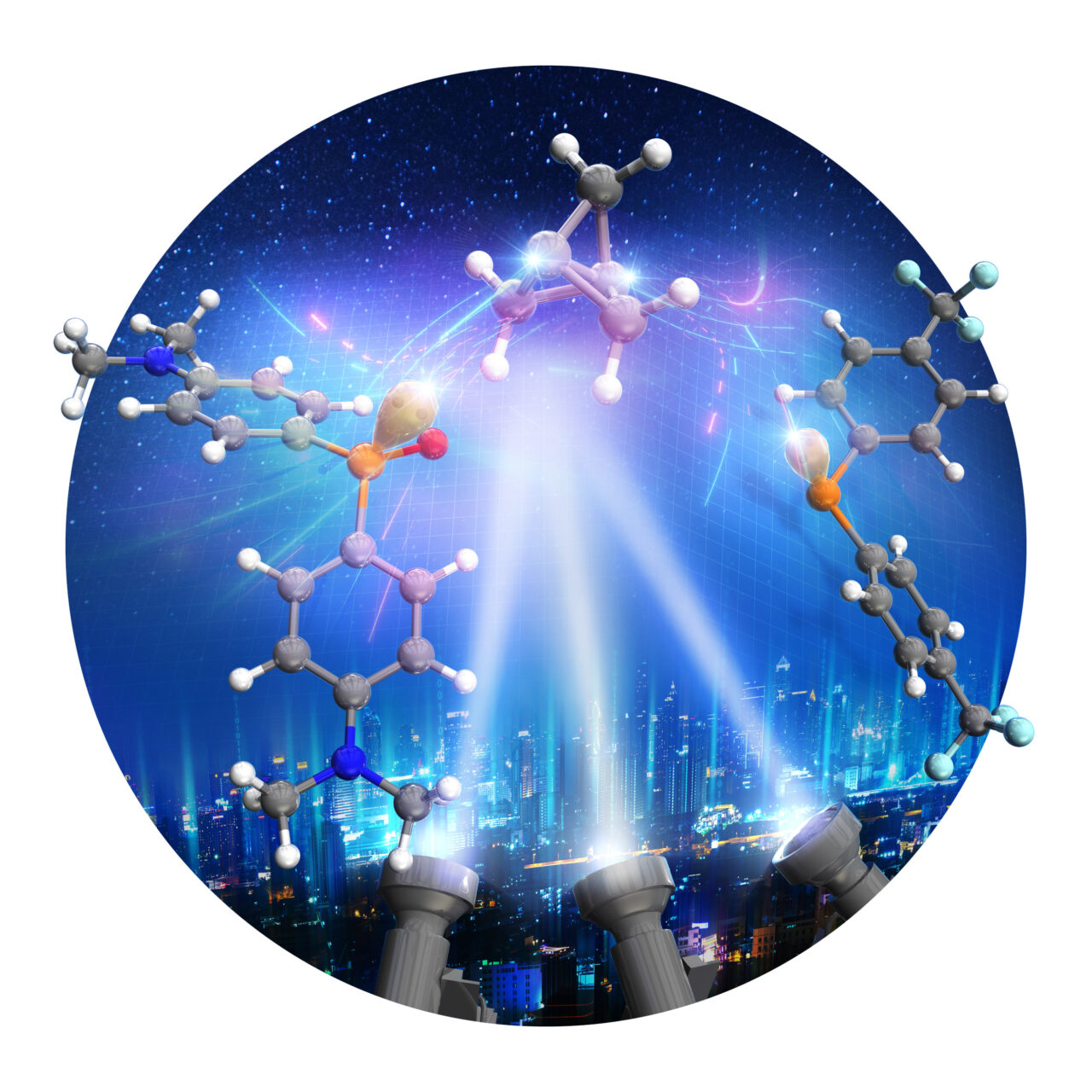
ICReDD Professors Tsuyoshi Mita, Satoshi Maeda, and Yasuchika Hasegawa collaborated to develop a versatile method for synthesizing a wide variety of bicyclo[1.1.1]pentane(BCP)-based diphosphine ligands. BCP ligands have been gaining attention due to their unique structural properties, but only a few examples of BCP ligands have been previously reported. The method developed in this study can produce diverse, straight-shaped BCP ligands with different substituents, greatly expanding their potential utility.
Researchers were able to add two different phosphine groups to the starting material [1.1.1]propellane by utilizing blue LED light and an iridium catalyst, or just white LED light alone. Computational results corroborated by further experiments showed the reaction proceeds via a radical chain process.
Researchers then used the BCP ligands to create a transition metal complex using gold atoms. It was confirmed that the two phosphorus atoms in the BCP ligand coordinate with two different gold atoms, resulting in a straight-shaped complex. This straight complex with a 3D ligand center differs from disphosphinoethane-based ligands, where the two phosphorus atoms bind to a single metal atom forming a cyclic complex, and also differs from p-subsituted benzenes that are straight-shaped but have a 2D molecule at the ligand center (see below figure). This difference could lead to interesting new properties.
Finally, the team created a europium-based coordination polymer using the BCP ligands. The unique octa-coordination of the europium center creates a structure that may be useful for creating luminescent photonic materials.


